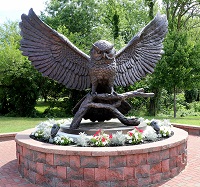Date Approved
2013
Document Type
Thesis
Degree Name
Master of Science in Biomedical Sciences
Department
Cell Biology
College
Graduate School of Biomedical Sciences
Sponsor
Humigen LLC; Medical Diagnostic Laboratories
First Advisor
Grant Gallagher, PhD
Committee Member 1
Raymond Yu, PhD
Committee Member 2
Venkataswar Venkataraman, PhD
Committee Member 3
Kathleen Iacono, PhD
Subject(s)
Th17 Cells, Autoimmune Diseases, Interleukin-23, Peptides, Gene Expression Regulation
Disciplines
Cell Biology | Genetic Processes | Immune System Diseases | Laboratory and Basic Science Research | Medical Cell Biology | Medicine and Health Sciences | Molecular Biology | Therapeutics
Abstract
Pathogenic Th17 cells drive progression of many autoimmune diseases. Th17 cells develop from naïve T cells in the immune system after antigen-driven stimulation in a specific cytokine environment. Normally, T cells act to fight off infection, but when not properly controlled, they can cause disease. The cytokine interleukin-23 (IL-23) plays an essential role in the expansion of pathogenic Th17 cells. IL-23 is a heterodimeric protein, composed of a p19 alpha chain and a p40 beta chain. The p40 is also part of IL-12 and binds to the IL-12 receptor beta 1 (IL-12Rβ1) subunit. Thus, it follows that the IL-23 receptor is comprised of the IL-12Rβ1 and IL-23 receptor alpha (IL23Rα) subunits. New research in therapeutics for autoimmune disease is attempting to inhibit IL-23 from binding to its receptor. Our laboratory previously screened a peptide library through display technologies for peptides that bound to the IL-23Rα. Peptides #7 and #2 were identified as having the strongest inhibitory activity on the IL-23 signaling pathway. However, peptides are small, leading them to be cleared from a biological system in a manner of minutes; therefore, the present project created fusion proteins of these peptides with mouse IgG2a-Fc. They were then expressed in mammalian cells, secreted and purified from medium. Peptide #2-Fc and its unmodified counterpart, Peptide #2, were tested and compared using cell-free and cell-based systems to ensure minimal loss of inhibitory activity upon fusion. This work generated a Peptide #2-Fc fusion protein with the capability to bind the IL23Rα chain and thus block IL-23 binding and inhibit subsequent signaling, as well an increased serum half-life over the original Peptide #2.
Recommended Citation
Probasco, Brianna L., "Generation and Characterization of Peptide Fusion Proteins" (2013). Graduate School of Biomedical Sciences Theses and Dissertations. 7.
https://rdw.rowan.edu/gsbs_etd/7
Included in
Cell Biology Commons, Genetic Processes Commons, Immune System Diseases Commons, Laboratory and Basic Science Research Commons, Medical Cell Biology Commons, Molecular Biology Commons, Therapeutics Commons

